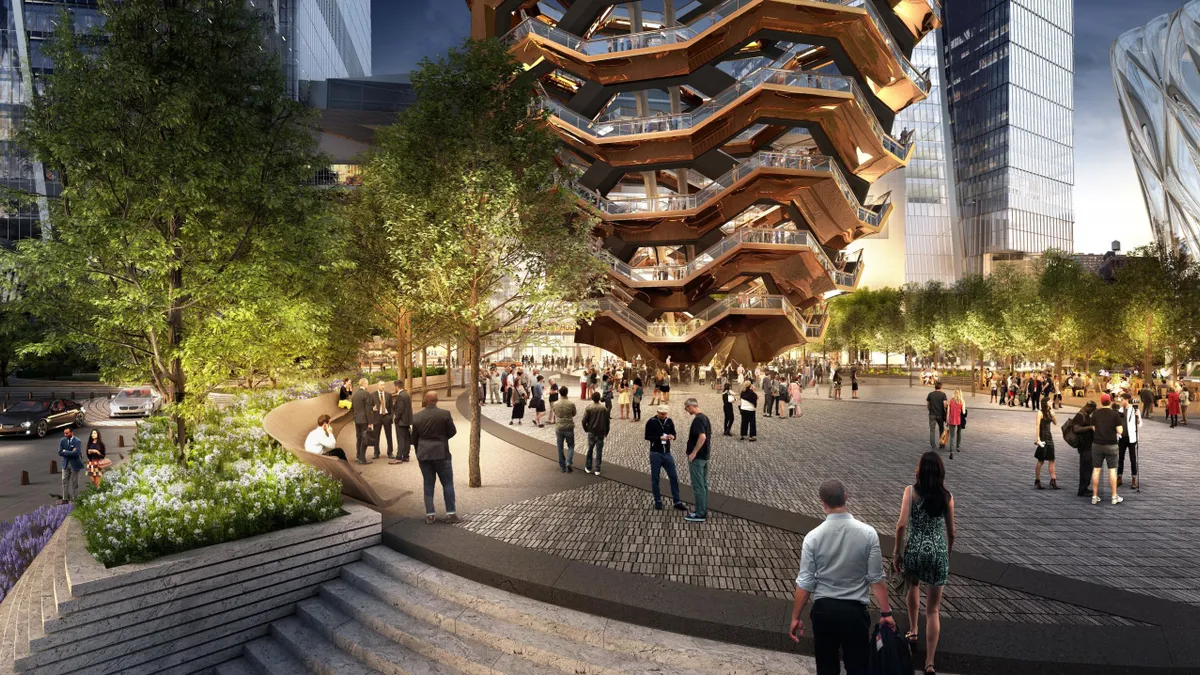Dive Brief:
- Although some buildings in New York City's $25 billion Hudson Yards project are already occupied and others are still under construction, Related Cos. and Oxford Properties Group officially opened the development Friday, showcasing the eastern half, according to AM New York.
- The Eastern Yard includes four office buildings: the 1.8 million-square-foot, 895-foot-tall 10 Hudson Yards, which opened in 2016; the 1,296-feet-tall 30 Hudson Yards, which will be home to the tallest outdoor observation deck in the Western Hemisphere and will open in 2020; the 985-foot-tall 50 Hudson Yards, which will take up a city block when it opens in 2022; and the 1.3 million-square-foot 55 Hudson Yards, located next to the High Line elevated park and completed last year.
- Also being formally introduced to the public are two residential towers: 15 Hudson Yards, which will offer a mix of affordable and market-rate rentals when it opens this fall, and 35 Hudson Yards, a mixed-use condominium high-rise set to begin sales this week. Also scheduled to be introduced March 15 is The Shed, a 200,000 square-foot cultural center, set to open in April; the Shops and Restaurants at 20 Hudson Yards; and the Thomas Heatherwick-designed interactive, climbable sculpture called the Vessel.
Dive Insight:
Hudson Yards has been in the planning stages for two decades, according to Curbed New York, and under construction for about six. The entire 28-acre project, much of it built above former rail yards, is expected to add $19 billion to New York City’s gross domestic product each year. Construction and development costs through 2025 are expected to total $20 billion.
Developers have also considered the possibility of natural disasters, terrorist acts and other events that could threaten the security of corporate tenants, visitors and residents and designed Hudson Yards, according to The Wall Street Journal, as an impenetrable “city within a city.”
Features include a power plant, which will keep the development's fiber-based electrical and internet systems operating even in the event that the city’s power grid goes down; a rainwater collection system that will circulate 8 million gallons of water a year; and a security system to keep intruders from reaching the underground area built over tracks. The structures also are designed to survive flood events, with critical systems located on upper floors and airtight "submarine doors" underground that can be closed to block off hurricane or other storm surges.
After a rocky relationship with local unions during the first phase of construction, Related just reached an amicable arrangement with the Building and Construction Trades Council of Greater New York that puts hostilities — and lawsuits — to bed and sets up a good start for the second stage of the development.
EarthCam provided 4K time-lapse filming of the first phase, which can be seen below.













